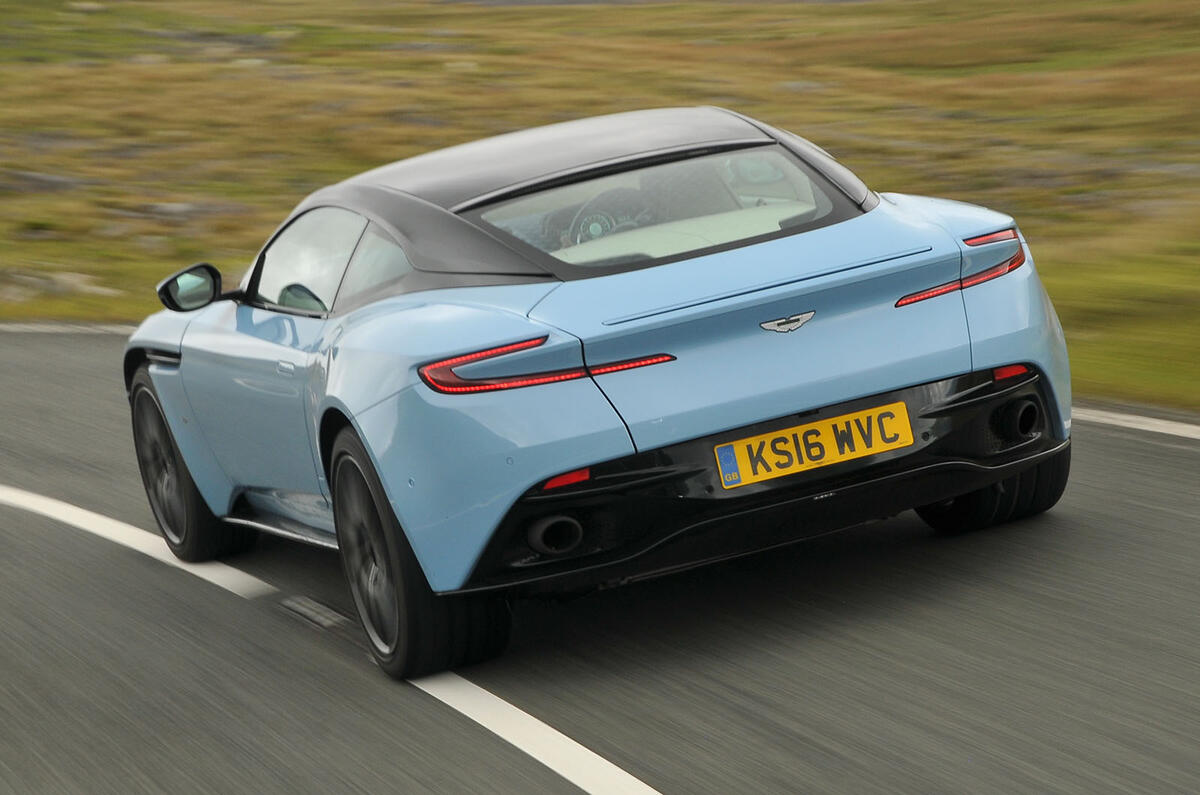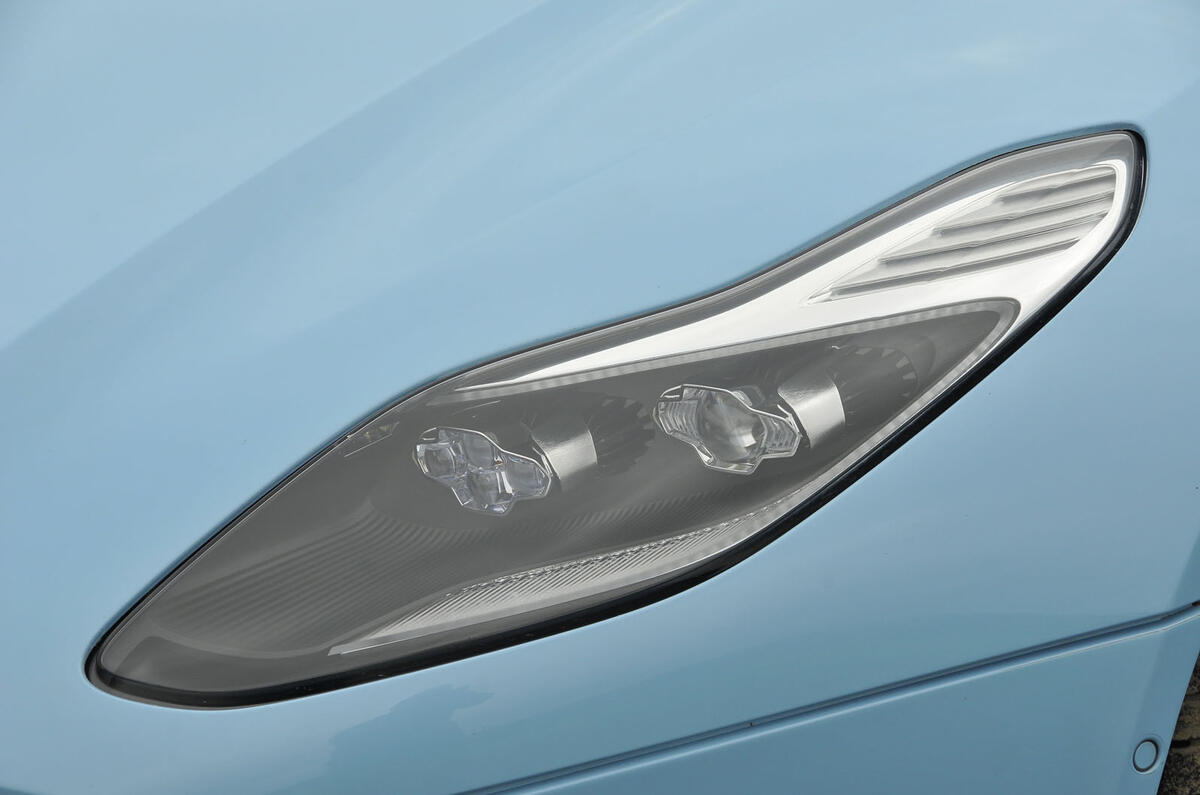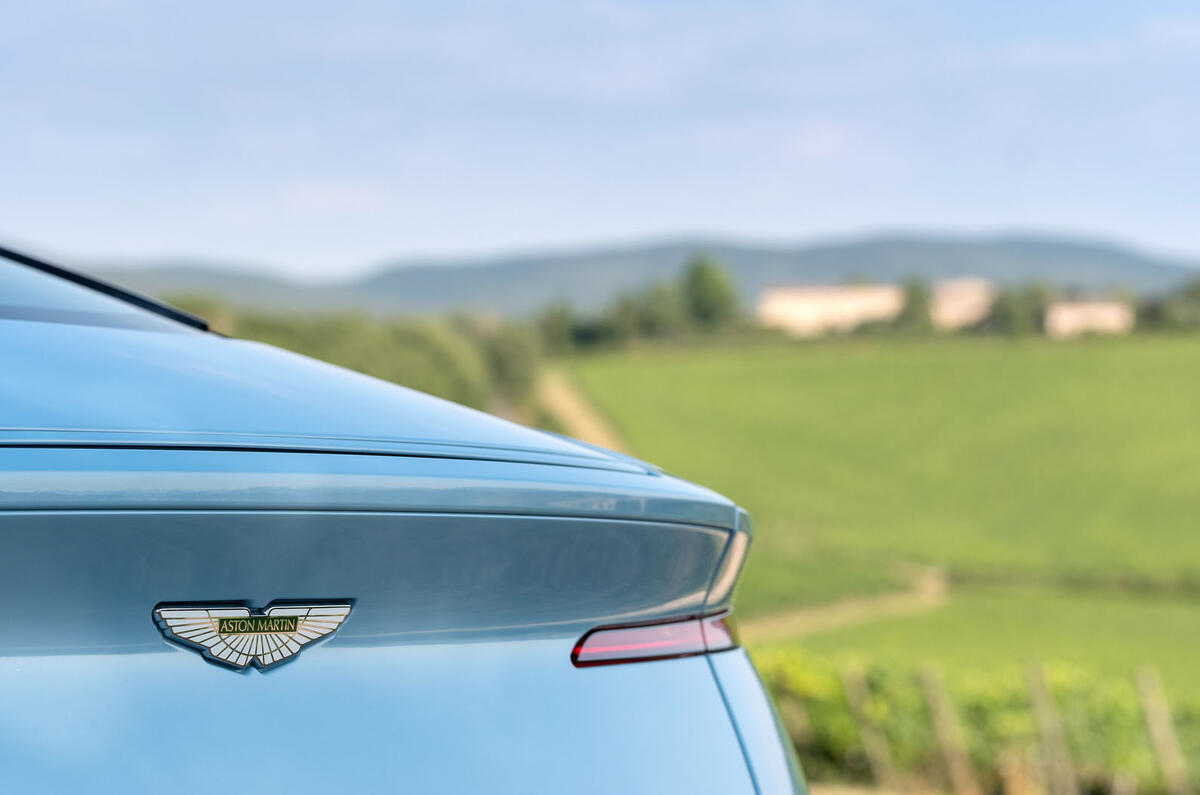The DB11’s door sills are notably slimmer than those of the DB9, making ingress easier as you swing your legs over and into the car’s deep and roomy-feeling footwell.
The high centre console and shapely, high-rise dashboard look familiar, but the instruments aren’t, while the material quality and integrity of the smaller fixtures is a real improvement. Where plain, cheap buttons, stalks, levers and switchgear dragged the DB9 down, you find mostly solid, grained, expensive-feeling fittings.
A satin-finish aluminium look is common to much of the trim, although not all of it benefits from the same authentic cool metallic feel.
But overall, the perceived cabin quality is many times better than that of its predecessor, and Aston Martin's newly developed skill with leather is impressive.
Instead of the fly-off manual handbrake sited outboard of the driver’s seat (as has been common to Astons for decades), you now get an automatic parking brake – which does rob the car of a little sense of occasion.
There’s a close cluster of column stalks sprouting on the left of the steering wheel, exactly as you’d find them on, say, a Mercedes-Benz C-Class.
There are no stalks at all to the right of the wheel, this being where Mercedes would locate its gear selector lever, whose purpose, in an Aston, is accomplished via the Park, Reverse, Neutral and Drive buttons on the centre stack.





















